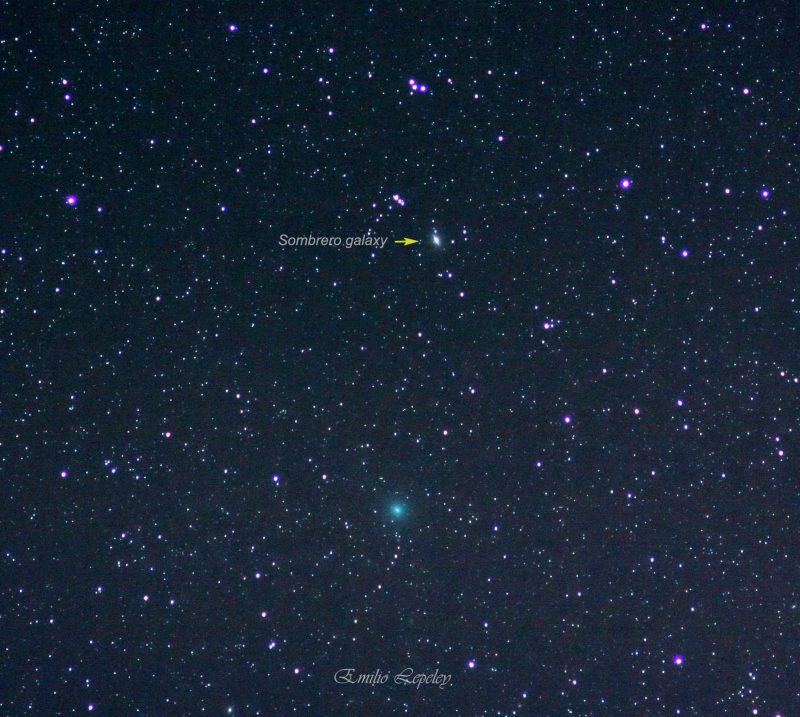
© Emilio LepeleyEmilio Lepeley in Elqui Valley, Vicuna, Chile, caught comet C/2018 Y1 (Iwamoto) – the green fuzzball at bottom center – on February 3, 2019, in the same field of view as the famous Sombrero Galaxy. Thank you, Emilio!
A new celestial visitor - a comet - was
discovered by Japanese astronomer Masayuki Iwamoto in late 2018. It'll provide nice opportunities for astrophotographers, as it will pass close to a couple of
Messier objects in February 2019.
It's a fast-moving comet that will be closest to Earth on February 12, 2019, at around 2:57 p.m. ET (19:57 UTC; translate to your time zone). The celestial visitor will safely pass by Earth at some 28 million miles (45 million km). The comet has been designated C/2018 Y1 (Iwamoto).
This comet is fast! Comet C/2018 Y1 (Iwamoto) is traveling through space at the amazing speed of 147,948 miles per hour (238,099 km/h) or 66 km per second, relative to Earth.
The best nights for observing the comet (with binoculars and small telescopes) should be on February 11 and 12. Preliminary estimates suggest the newly found comet might reach a brightness or
magnitude between 7 and 7.8 , which means it should be easily seen with small telescopes and binoculars. It will not be visible to the eye alone.

Comment: Maybe there's something to this concept of 'February Fireballs'? Earth passes through no particularly significant meteor streams - known ones anyway - in February, and yet we keep getting smacked by big 'uns in this month. Not only that, but Cuba in particular was hit almost 6 years to the day!
Flashback: Meteor explodes above Cuba, shockwave shakes homes - 13 Feb 2013, same day as Chelyabinsk blast in Russia